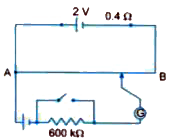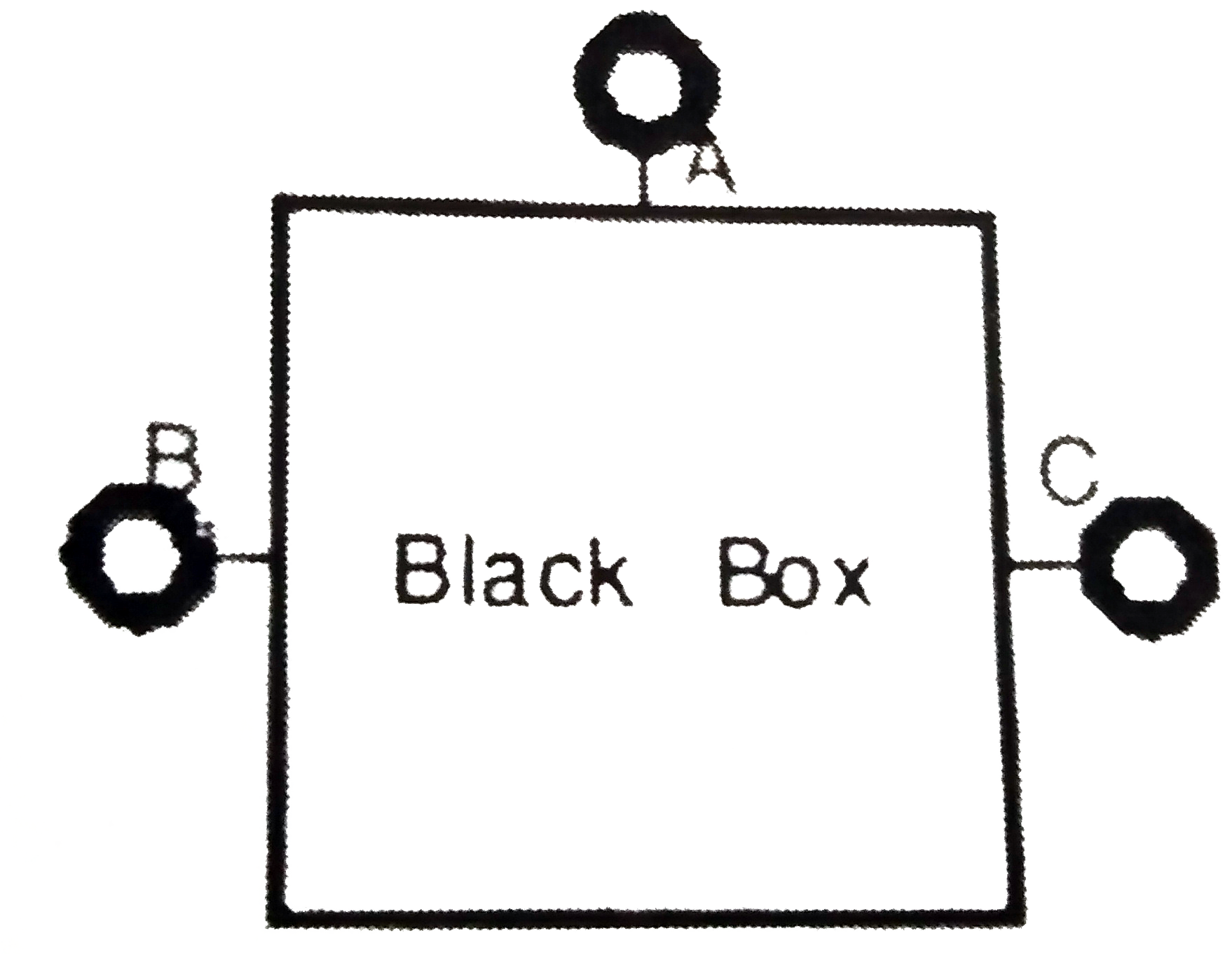If fuse of 250 mA, 500 mA, 1 A, 5 A, and 10 A were available, which one would be the most suitable for protecting an amplifier short circuit of the most suitable for protecting an amplifier rated at 240 V, 180 W?
The correct Answer is:N/a
1 A
Topper's Solved these Questions
- BOOK - LAKHMIR SINGH & MANJIT KAURCHAPTER - MAGNETIC EFFECT OF ELECTRIC CURRENT EXERCISE - LONG ANSWER TYPE QUESTIONS2videos
MAGNETIC EFFECT OF ELECTRIC CURRENT
- BOOK - LAKHMIR SINGH & MANJIT KAURCHAPTER - MAGNETIC EFFECT OF ELECTRIC CURRENT EXERCISE - QUESTIONS BASED ON HIGH ORDER THINKING SKILLS6videos
MAGNETIC EFFECT OF ELECTRIC CURRENT
- BOOK - LAKHMIR SINGH & MANJIT KAURCHAPTER - MAGNETIC EFFECT OF ELECTRIC CURRENT EXERCISE - NCERT BOOK2videos
MAGNETIC EFFECT OF ELECTRIC CURRENT
- BOOK - LAKHMIR SINGH & MANJIT KAURCHAPTER - ELECTRICITY EXERCISE - NCERT3videos
ELECTRICITY
- BOOK - LAKHMIR SINGH & MANJIT KAURCHAPTER - REFLECTION OF LIGHT EXERCISE - Very Short Answer Type Questions1videos
REFLECTION OF LIGHT
Similar Questions
The following instruments are available in a laboratory :
(i) Milliammeter A1 of range 0.300mA and least count 10mA
Milliammeter A2 of range 0.200mA and least count 20mA
Voltmeter V1 of range 0.3V and least count 0.3V
Which pair of instruments would be the best choice for carrying out the experiment to determine the equivalent resistance of two resistors connected in series ?View Solution(a) An electric iron is rated at 230 V, 750 W. Calculate (i) the maximum current, and (ii) the number of units of electricity it would use in 30 minutes.
(b) Which of the following fuse ratings would be suitable for this electric iron ?
1 A, 3 A, 5 A, 13 AView Solution
Knowledge Check
- Question 1 - Select One
Study the given data and answer the questions that follow.
A sample of an enzyme called lactase was isolated from the intestinal lining of a calf. Assays were undertaken to evaluate the activity of the enzyme sample.
The substrate of lactase is the disaccharide lactose. Lactase breaks a lactose molecule in two, producing a glucose molecule and a galactose molecule.
Two assays were carried out.
Lactose concentration (% w/v)151515151515Concentration of enzyme smaple (%v/v)0510152025Reaction rate μmole glucose sec−1mL−10255075100125
Lactose concentration (% w/v)0510152530Concentration of enzyme smaple (%v/v)555555Reaction rate μmole glucose sec−1mL−101525354040
Which of the following assays would you expect to have the highest reaction rate ?ALactose concentration (%w/v)Concentration of enzyme sample (%v/v)2 15 5BLactose concentration (%w/v)Concentration of enzyme sample (%v/v)2 30 5CLactose concentration (%w/v)Concentration of enzyme sample (%v/v)2 15 25DLactose concentration (%w/v)Concentration of enzyme sample (%v/v)2 30 25 - Question 2 - Select One
Study the given data and answer the questions that follow.
A sample of an enzyme called lactase was isolated from the intestinal lining of a calf. Assays were undertaken to evaluate the activity of the enzyme sample.
The substrate of lactase is the disaccharide lactose. Lactase breaks a lactose molecule in two, producing a glucose molecule and a galactose molecule.
Two assays were carried out.
Lactose concentration (% w/v)151515151515Concentration of enzyme smaple (%v/v)0510152025Reaction rate μmole glucose sec−1mL−10255075100125
Lactose concentration (% w/v)0510152530Concentration of enzyme smaple (%v/v)555555Reaction rate μmole glucose sec−1mL−101525354040
Which of the following statements can be concluded from the two assays ?AThe reaction rate of the lactase assay is always proportional to the amount of enzyme present.BThe amount of lactose in an assay has no effect on the rate of the reaction.CThe reaction rate of the lactase assay is proportional to the amount of lactose present.DThe reaction rate is proportional to the amount of enzyme present at a lactose concentration of 15%w/v. - Question 3 - Select One
Question Stimulus :-
DIRECTIONS : Read the following passage carefully and answer the following questions
The history of literature really began long before man learnt to write. Dancing was the earliest of the arts. Man danced for joy round his primitive camp fire after the defeat and slaughter of his enemy. He yelled and shouted as he danced and gradually the yells and shout became coherent and caught the measure of the dance and thus the first war song was sung. As the idea of God developed prayers were framed on generation to another, each generation adding something of its own
As man slowly grew more civilized hee was compelled to invent some method of writing by three urgent necessities. Then were certain things that it was dangerous to forget and which, therefore, had to be recorded. It was often necessary to communicate with person who were some distance away and it was necessary to protect one's property by making tools cattle and so on, in some distinctive manner. So man taught himself to write and having learned to write purely for utilitarian reasons he used this new method for preserving his war songs and his prayers Of course, among these ancient people, there were only a very few individual who learned to write, and only a few could read what was written.
What would be the most appropriate title of the passage ?AThe various forms of music and dance.BThe outline of literature.CHistory of civilization.DNone of the above
If two buibs of 25 W and 100 W rated at 400 V are connected in series across a440 V supply, will both the bulb fuse? If not, then which one ?
(b) Two bulbs rated at 60 W and 100 W (220 V) are connected (i) in series and (ii) in parallel. Find the heat dissipated in the bulbs and also the total heat dissipatedin the circuit.
(c) A heater is designed to operate with a power of1000 watts in a 100 volt line. It is connected with an identical heater (B) in series and a100 V second heater (C) in parallel as shown. What should be the resistance of C so that the heater A may operate at a power level of 62.5 watts, if the entire combination is connected across a 100 V line
 View Solution
View Solution
Fig. shows a potentiometer with a cell of 2.0 V and internal resistance 0.40 Ω maintaining a potential drop across the resistor wire AB. A standard cell which maintains a constant emf of 1.02 V (for very moderate currents up to a few mA) gives a balance point at 67.3 cm length of the wire. To ensure very low currents drawn from the standard cell, a very high resistance of 600 kΩ is put in series with it, which is shorted close to the balance point. The standard cell is then replaced by a cell of unknown emf and the balance point found similarly, turns out to be at 82.3 cm length of the wire.
(a) What is the value of ε ? (b) What purpose does the high resistance of 600 kΩ have ? (c) Is the balance point affected by this high resistance ? (d) Would the method work in the above situation if the driver cell of the potentiometer had an emf of 1.0 V instead of 2.0 V? (e) Would the circuit work well for determining an extremely small emf, say of the order of a few mV (such as the typical emf of a thermo-couple) ? If not, how will you modify the circuit ?View SolutionThis question is about a closed electrical black box with three terminals A, B and C as show. If is known that the electrical elements connecting the points A, B, C inside the box are resistance (if any) in delta formation. A student is provided a variable power supply, an ammeter and a voltmeter Schematic symbols for these elements are given in part (a). She is allowed to connect these elements externally between only two of the terminals (AB or BC of CA) at a time to form a suitable circuit.

(a) Draw a suitable ci9ucuit using the above elemets to measure voltage across the terminals A and B and the current drawn from power supply as per Ohm's law.
(b) She obtains the following readings in volt and millampera for the three possible connections to the blace box
(b) She obtains the following readings in volt and millampere for the three possible connection to the black box.
AB BC ACV(V)/(mA)V(V)/(mA)(V(V)/(mA)0.53 0.540.83 0.170.85 0.150.77 0.771.65 0.351.70 0.301.02 1.012.47 0.532.55 0.451.49 1.513.29 0.713.4 0.601.98 2.024.11 0.894.25 0.752.49 2.514.94 1.065.10 0.90
In each plot V (on Y-axis) -1 (on X-axis) on the graph papers provided. Preferably use a pencil to plot. Culculate the volues of resistances from the plots. Show your calculations below for each plot clearly indicating graph number.
( c) From your calculations above draw the arrangement of resistances inside the box indicating the values.View SolutionThe conducting rod shown in Fig. 30-37 has length Land is being pulled along horizontal, frictionless conducting rails at a constant velocity →v. The rails are connected at one end with a metal strip. A uniform magnetic field →B, directed out of the page, fills the region in which the rod moves. Assume that L = 10 cm, v = 5.0 m/s, and B = 1.2 T. What are the (a) magnitude and (b) direction (up or down the page) of the emf induced in the rod? What are the (c) size and (d) direction of the current in the conducting loop? Assume that the resistance of the rod is 0.40 Ω and that the resistance of the rails and metal strip is negligibly small. (e) At what rate is thermal energy being generated in the rod? (f) What external force on the rod is needed to maintain →v? (g) At what rate does this force do work on the rod?
View SolutionA common emitter circuit is used as an amplifier. Its current gain is 50 . If the input resistance is 1kohm and the input voltage is 5V, then the output current (in mA) will be
View Solution

